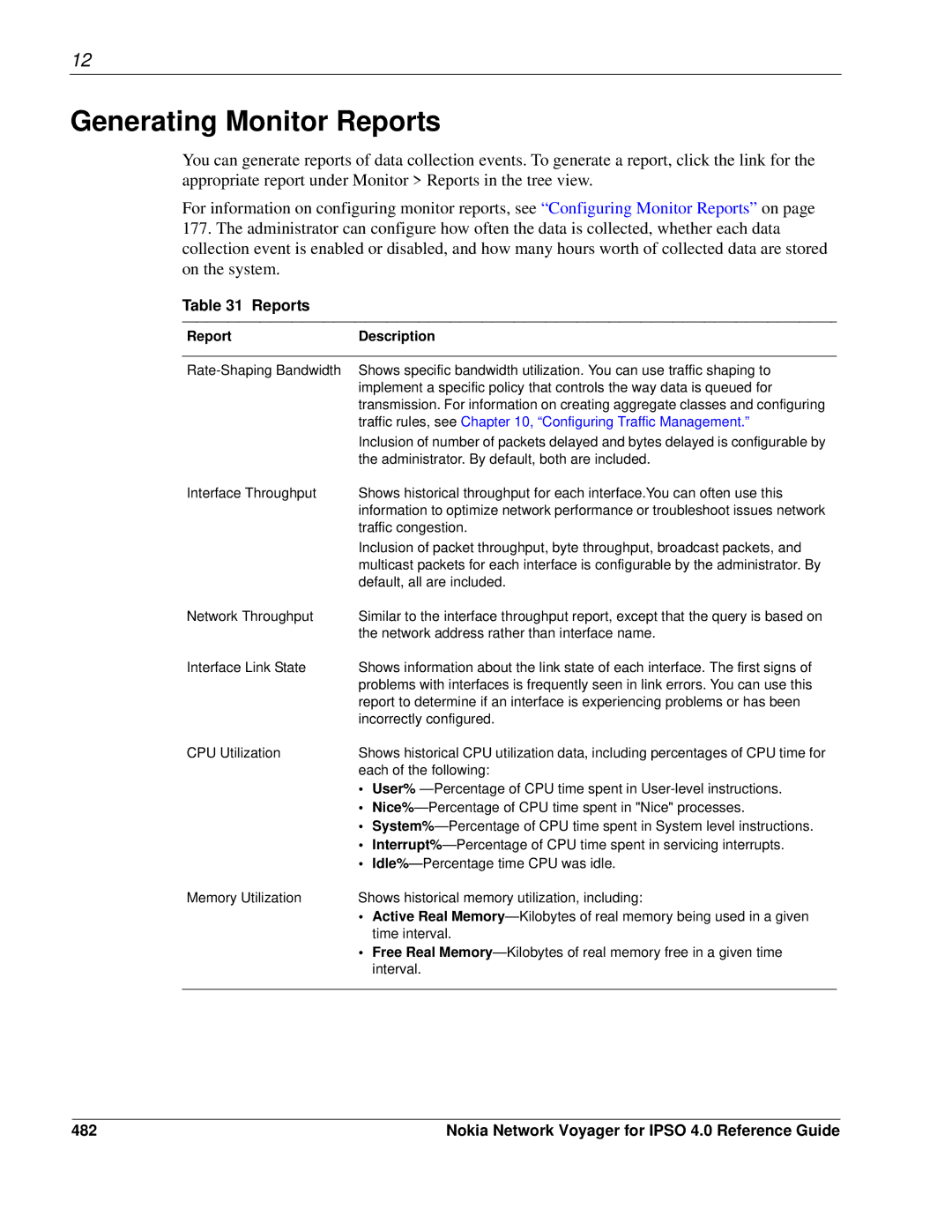
12
Generating Monitor Reports
You can generate reports of data collection events. To generate a report, click the link for the appropriate report under Monitor > Reports in the tree view.
For information on configuring monitor reports, see “Configuring Monitor Reports” on page
177.The administrator can configure how often the data is collected, whether each data collection event is enabled or disabled, and how many hours worth of collected data are stored on the system.
Table 31 Reports
Report | Description | |
|
| |
Shows specific bandwidth utilization. You can use traffic shaping to | ||
| implement a specific policy that controls the way data is queued for | |
| transmission. For information on creating aggregate classes and configuring | |
| traffic rules, see Chapter 10, “Configuring Traffic Management.” | |
| Inclusion of number of packets delayed and bytes delayed is configurable by | |
| the administrator. By default, both are included. | |
Interface Throughput | Shows historical throughput for each interface.You can often use this | |
| information to optimize network performance or troubleshoot issues network | |
| traffic congestion. | |
| Inclusion of packet throughput, byte throughput, broadcast packets, and | |
| multicast packets for each interface is configurable by the administrator. By | |
| default, all are included. | |
Network Throughput | Similar to the interface throughput report, except that the query is based on | |
| the network address rather than interface name. | |
Interface Link State | Shows information about the link state of each interface. The first signs of | |
| problems with interfaces is frequently seen in link errors. You can use this | |
| report to determine if an interface is experiencing problems or has been | |
| incorrectly configured. | |
CPU Utilization | Shows historical CPU utilization data, including percentages of CPU time for | |
| each of the following: | |
| • | User% |
| • | |
| • | |
| • | |
| • | |
Memory Utilization | Shows historical memory utilization, including: | |
| • | Active Real |
|
| time interval. |
| • | Free Real |
|
| interval. |
|
|
|
482 | Nokia Network Voyager for IPSO 4.0 Reference Guide |
